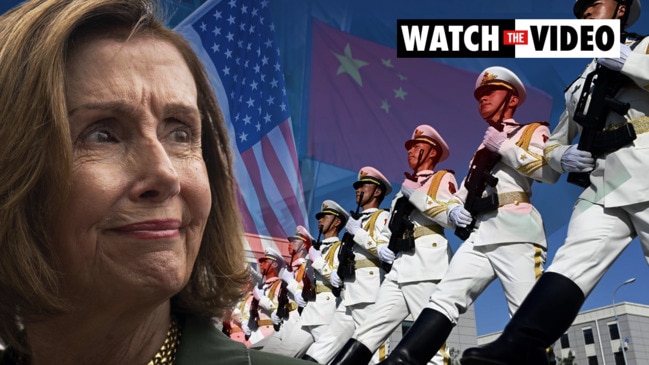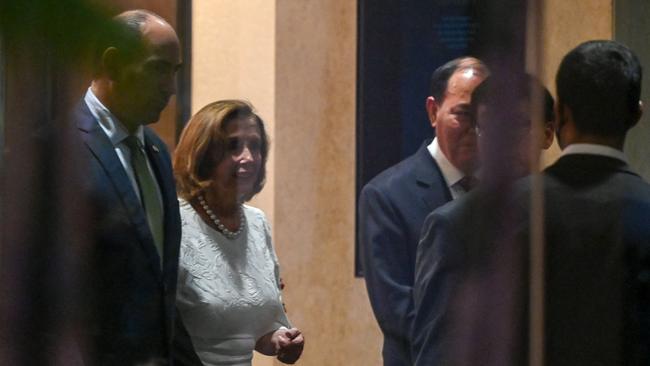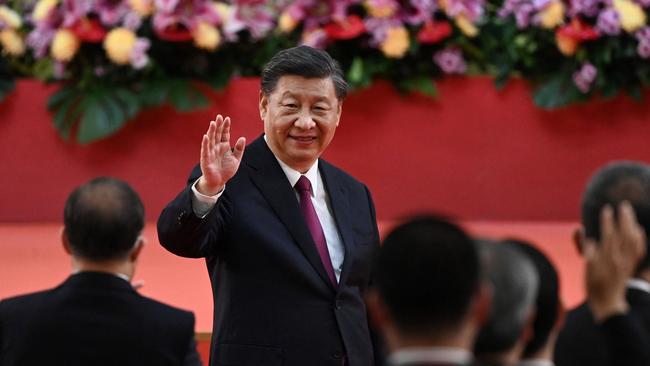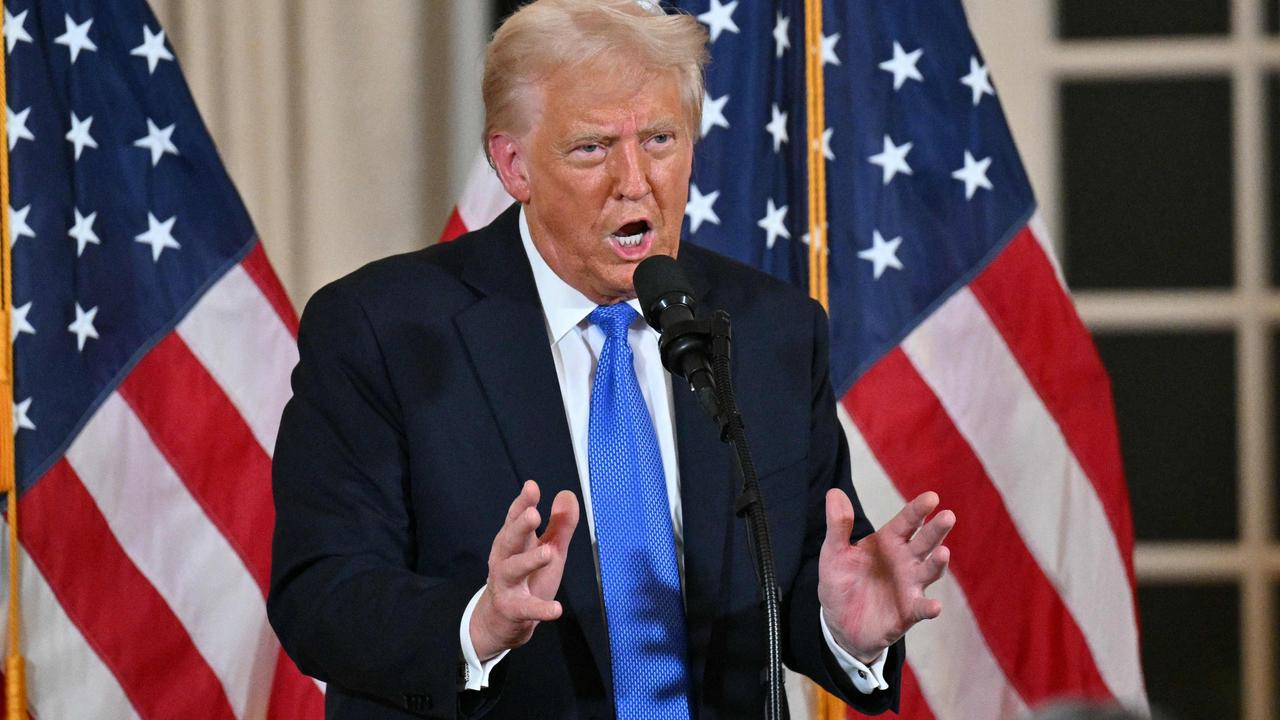Pelosi’s Taiwan Trip Will End an Era of Ambiguity

House Speaker Nancy Pelosi is all but certainly going to Taipei. The Chinese government is threatening repercussions, even a potential military response. The situation is tying the US government in knots because it’s relying on a deliberate policy of ambiguity that no longer makes sense.
When news of Ms Pelosi’s potential visit first leaked it reaffirmed what was already known. Control over Taiwan is a red line for Beijing, which remains hellbent on redressing perceived historical wrongs. President Xi Jinping believes Taiwan is Chinese territory that needs to be reunited with the mainland.
The majority of Taiwanese disagree.
An overwhelming number, over 80 per cent, of those recently surveyed by the Election Study Centre at National Chengchi University don’t want anything to change in the short term. More than half say they either want the status quo to remain indefinitely or to remain and decide later.

There is one sentiment that has grown considerably since 2018 - those that want short-term stability, but a move toward independence. They now account for 25 per cent of those surveyed, up from 15 per cent four years ago. If that continues to grow, and is reflected in Taiwanese policy, Beijing is likely to act forcefully sooner rather than later.
The US, meanwhile, has maintained political obfuscation, also known as “strategic ambiguity,” toward China-Taiwan relations. Washington recognizes one Chinese government based in Beijing and doesn’t support Taiwanese independence, but also doesn’t agree to China’s claim over Taiwan. This has been the status quo for decades. As long as everything remains the same, there has been no need to clarify what happens if this fragile peace breaks.
Ms Pelosi’s visit doesn’t change any of this. The de facto US diplomatic mission known as the American Institute in Taiwan isn’t being upgraded to an embassy. Weapons sales continue to be strictly defensive in nature.
China’s response to Ms Pelosi’s trip, however, may force an end to this ambiguity. Recent events suggest Beijing’s calculations of its own strength have changed considerably. Upgraded missiles that can reportedly strike aircraft carriers, rapid expansion of China’s naval fleet, increased daily military flights challenging air rights around Taiwan, and Mr Xi’s rising rhetoric about forcefully taking Taiwan all point to a more aggressive policy.
That is a change to the status quo.

The risks are compounded by Beijing’s broader, regionwide policy shift. China is making increasingly coercive moves in the South China Sea despite a 2016 ruling by the UN Permanent Court of Arbitration that invalidated its “historic” territorial claims to the area. Valuable ocean resources continue to be monopolized at the expense of Southeast Asian nations. Artificial islands that China insisted were purely for commercial use are being militarized. And the Chinese military continues to make unilateral claims over both internationally recognized airspace and the sovereign airspace of nearby countries. (Malaysia has recently filed objections to recent overflights of Sarawak.) China has faced no major international repercussions for these actions. China’s broader intentions also stretch far from its own shores. Similar to President Vladimir Putin’s dream of a Russian empire, Beijing’s leaders see China re-emerging as a hub of greater Asia and beyond. As the country has grown into a world economic power, its interests have similarly led to an expanding global military presence.
Aspirations for Taiwan are only one element of a broader strategy that enlarges China’s military projection throughout the Asia-Pacific region. Beijing has long sought control over an area stretching from Japan’s northern islands down through Taiwan to the South China Sea.
China sees the area as holding both defensive value, even though there is no credible threat to its territorial integrity, and more importantly offensive value in expanding its reach and pushing the US out of Asia.

Washington’s policy regarding Taiwan only worked so long as China believed it was weaker than the US that is clearly no longer the case. The era of open-ended China engagement launched by Secretary of State Henry Kissinger in the 1970s is also over. Economic integration didn’t yield political liberalization. There is no way to avoid reformulating US foreign policy in an environment this drastically changed. Realizing China’s ambitions are far greater than what previous policy makers believed may cause a rethink, but if China’s military overreacts to Ms Pelosi’s visit, the process will speed up considerably. Based on the public statements of Chinese officials so far, a military response isn’t only likely, but it will significantly escalate tensions.
Ending strategic ambiguity doesn’t mean turning China into an enemy, as some believe it should be, or backing unilateral Taiwanese independence, which the majority of Taiwanese don’t support. But it would serve as a much-needed deterrent to clarify where US red lines now lie. They should include clear communication that immediate defensive support for Taiwan’s military, as well as significant economic actions, would result from China’s use of force to take Taiwan.
A co-ordinated response to any Chinese aggression toward Taiwan also needs to include Japan, South Korea, Australia, Southeast Asian nations, and India. This isn’t the US against China, but the larger Indo-Pacific standing together against actions that destabilize the region.
Without clear consequences China is likely to miscalculate the costs of aggression and extend its military pursuits far beyond the Taiwan Strait. Ms Pelosi’s visit has merely renewed the urgency to clarify an outdated policy that has remained ambiguous for too long.
- Dow Jones


